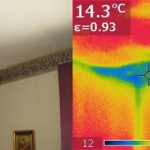Low Ball Offer on Home in Angus
 Most home sellers put a fair market value on their home when listing with a Realtor. You have discussed the positives and the negatives and set a price that is reasonable, then you get a Low Ball offer on your home. Many times sellers cannot get past their feelings and will simply reject a Low Ball offer.
Most home sellers put a fair market value on their home when listing with a Realtor. You have discussed the positives and the negatives and set a price that is reasonable, then you get a Low Ball offer on your home. Many times sellers cannot get past their feelings and will simply reject a Low Ball offer.
Controlling your emotions can help you look at the positive side of receiving a low offer, unless it is completely ridiculous. The positive side is someone is interested in your home and now you can negotiate, which is happens in every Real Estate transaction.
When a low offer comes in, rather than “slamming the door” by counter offering a full listing price. Take the time to cool the emotions and treat the sale a pure business deal. By counter offering a small amount below listing price, you send the message that you know what your home is worth and will not be giving it away any time soon. More importantly, it shows you are open to negotiation.
Remember when you start negotiating, it’s not where you start that counts, it’s where you end up.
Having your home Pre-inspected by the Angus Home Inspector can allow you to identify and correct items that will come up when your house is sold. Fixing or identifying potential issues will prevent financial surprises when the buyer has your home inspected and comes back to the table looking at a price reduction or item replacement.
Although a home inspection is only a visible assessment of the condition of your home an experience professional can detect issues that less experienced inspectors may miss. Roger Frost has been providing professional home inspections in the Angus and Essa area for over 10 years and has inspected over 5,000 homes.
 Free Thermal Imaging is offered on every home inspection. This valuable service allows missing insulation, electrical hot spots and hidden moisture to be detected. The Angus Home Inspection service was the first home inspector in Simcoe County to offer Thermal Imaging as part of the home inspection process.
Free Thermal Imaging is offered on every home inspection. This valuable service allows missing insulation, electrical hot spots and hidden moisture to be detected. The Angus Home Inspection service was the first home inspector in Simcoe County to offer Thermal Imaging as part of the home inspection process.
Many insurance companies now require you have your Fireplace or Wood Stove inspected by a WETT Certified Technician prior to issuing you an insurance policy. Roger Frost is WETT Certified and provides Wood Burning Appliance inspections for all of Simcoe County.
Call Roger Frost today to book your Risk Free home inspection. PH 705-795-8255

Recent Comments